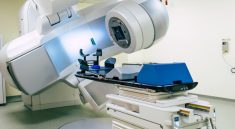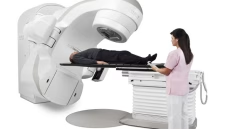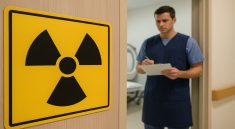ABGX – Radiation plays a crucial role in modern medicine. It diagnoses, treats, and monitors various conditions. However, it also carries risks. Misuse may harm both patients and staff. Therefore, education becomes essential. Radiation Protocols exist, but understanding drives compliance. Each technician must know safety thresholds. Doctors must justify every exposure. From radiologists to nurses, training matters. Moreover, learning isn’t one-time. New technologies demand continuous education. Without it, mistakes increase. Regulations alone cannot prevent incidents. Empowered knowledge protects everyone. So, healthcare systems worldwide emphasize learning. They invest in courses, certifications, and audits. And above all, culture must shift—from reaction to prevention.
Education as the Foundation of Radiation Safety
In every medical setting using radiation, education underpins safe practice. From X-rays to proton therapy, risks vary. Technicians must understand machine functions and patient positioning. They must calibrate machines precisely. Meanwhile, doctors must order only necessary tests. Learning goes beyond memorizing numbers. It involves decision-making under pressure. For example, pediatric imaging requires lower doses. In trauma, time pressures may tempt shortcuts. But proper training prepares staff to prioritize safety without delay. Moreover, hands-on workshops help reinforce classroom theory. Simulation labs mirror real situations. Feedback loops deepen understanding. Protocols without comprehension are ineffective. But when staff fully understand why steps matter, compliance improves dramatically.
Key International Guidelines Reinforce Local Practice
Global organizations establish baselines for radiation safety. The International Atomic Energy Agency (IAEA) publishes best practices. Meanwhile, WHO and national agencies align their guidelines accordingly. Local hospitals adopt these frameworks but adapt them contextually. For instance, a rural clinic may lack advanced monitoring tools. Yet the same core principles still apply. Doses must be justified, optimized, and limited. Continuous training ensures staff remain updated. Additionally, certification boards often mandate regular recertification. That requirement reinforces the importance of staying informed. Furthermore, international collaboration spreads awareness. Conferences, webinars, and journals share evolving knowledge. As technology advances, protocols must evolve. Therefore, global-local synergy matters.
Patient Education Reduces Anxiety and Increases Cooperation
Often, patients feel fear when told they’ll receive radiation. Some associate it with cancer. Others worry about lasting effects. Clear communication reduces anxiety. Staff must explain procedures calmly and transparently. For example, describing how a CT scan works builds trust. Telling patients about lead aprons reassures them. Moreover, informed patients cooperate better. They remain still during imaging. They follow prep instructions more closely. Thus, communication improves outcomes. Training staff in patient-centered language becomes part of protocol. Scripts, visuals, and analogies help demystify complex science. As a result, patients become partners in safety—not passive subjects. That partnership starts with dialogue.
“Read About: Global Guidelines Aim to Improve Radiation Safety for All”
Emerging Technologies Require Constant Skill Updates
Radiation tools evolve rapidly. Machines become faster and smarter. Some use AI to optimize angles and doses. Others integrate multiple imaging methods. However, sophistication requires training. Staff must keep up with interfaces, updates, and system logic. Without training, features go unused—or worse, misused. Vendors often provide onboarding. But internal refreshers remain critical. Hospitals now schedule monthly in-services. Staff rotate through workshops on calibration and emergency procedures. Moreover, online modules allow flexible learning. Certification programs include digital radiation safety components. With every new feature comes new responsibility. Learning never ends. Mastery today becomes outdated tomorrow. Therefore, systems must stay proactive.
Interdisciplinary Teams Strengthen Protocol Adherence
Radiation safety isn’t one department’s job. It involves everyone—from front desk to senior specialists. For instance, nurses verify identity and prep patients. Radiologists interpret results. Technologists run machines. Administrators set policy. When teams communicate, errors drop. Joint training sessions build shared understanding. Instead of silos, collaboration blooms. Departments align goals. Safety becomes culture—not checklist. Additionally, incident reviews include all stakeholders. Mistakes become lessons, not blame games. Staff feel empowered to report near misses. That openness strengthens systems. Regular team huddles reinforce priorities. Protocols stick when teams support each other. Knowledge shared is risk reduced.
Regulatory Pressure Drives Accountability and Learning
Governments monitor radiation use closely. Facilities must submit reports. Accidents invite investigation. Fines and penalties follow major breaches. Thus, compliance becomes urgent. But pressure alone doesn’t guarantee understanding. Training bridges that gap. Regulatory bodies now require learning logs. Hospitals must prove their staff are educated. Audits include quiz scores and attendance. Even vendors face scrutiny. As rules tighten, proactive learning becomes strategy. Smart systems integrate safety alerts and pop-up reminders. Dashboards track individual progress. Certificates are no longer enough. Demonstrated competency matters more. Therefore, the best defense is education. Protocols begin on paper—but live through people.



